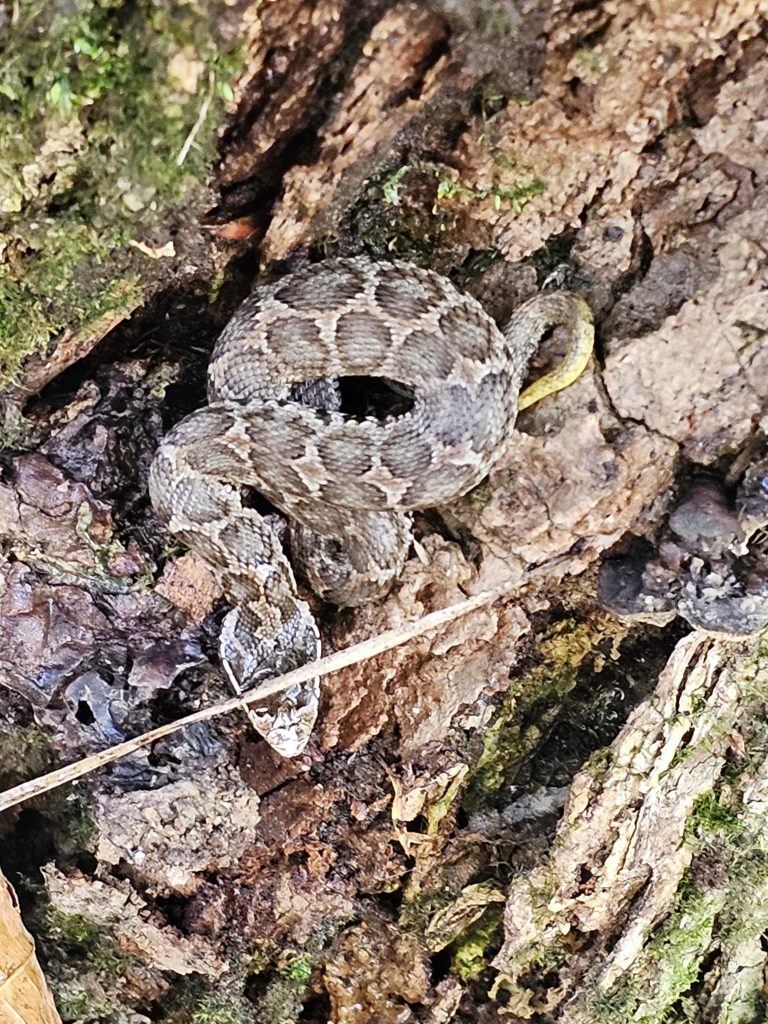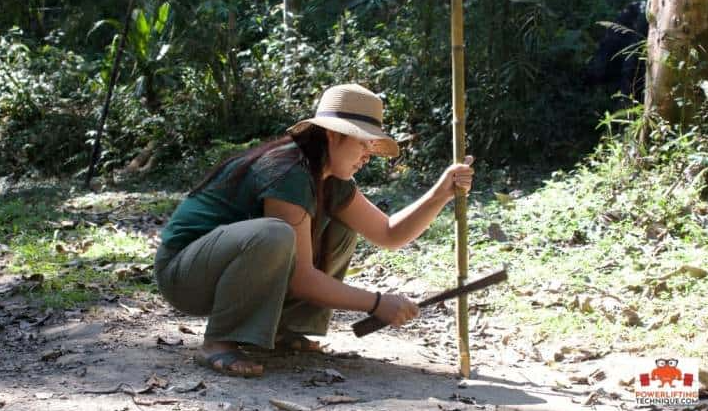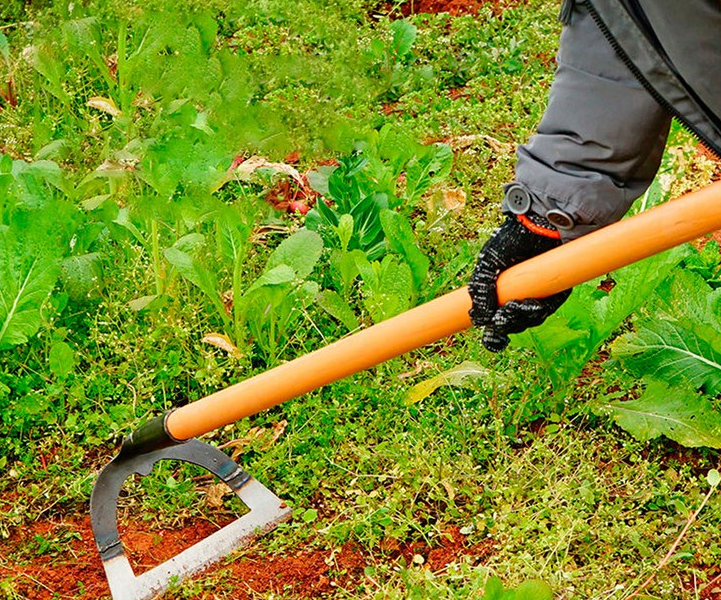When Culture Can Kill You

In the image above, an Asian woman can be seen working outside in a forested area while using a short-handled garden tool (bolo) and she is also wearing sandals with bare toes and feet exposed. This type of behavior and manner of dress (while working outside) has been common practice for thousands of years by people living within Asian nations. However, we will see that sometimes cultural behavior can be detrimental to human health and people have even died because of it.
In this post, I would like to use the above example of “Asian Working Posture” and “Asian Dress Style” to show how it can be dangerous to human life under certain situations. This serves as an “illustration” that people should consider their behavior and consider their actions within the context of their specific situation. People should not just blindly follow the traditions of their ancestors (even if such things were being followed continually for thousands of years before them).
Introduction to the Venomous Species of Snake of the Family of Mamushi

Above is an image of a [Short-Tailed Mamushi] viper which I took on my smartphone when I was out hiking in the mountains east of Wonju, South Korea. This snake was only about the diameter of my small finger so it was probably born recently. This snake was discovered during the last week of April 2024, when it was 10C outside. Possibly this small snake was trying to get off of the cold ground so it climbed onto the base of this tree (where I happened to see it).

The image above of an adult snake (of about a foot-long) was taken by Mike Friel. This [Short-Tailed Mamushi-Gloydius blomhoffii brevicaudus] was found sunning itself on a concrete road in Korea. This sub-species of Mamushi viper is found in Northeastern China and Korea.
The image above is of excellent quality because the snake is so clearly visible without any leaves or vegetation or debris to hide it. These snakes are almost “invisible” when they lie still among the forest vegetation or within fields or among grass or leaves. Note the yellowish tail, (which is probably wiggled by the snake like a worm) to attract prey such as birds. The same circular patterns on the snake’s body and the yellowish-color tail can also be seen on the baby snake which I photographed using my smartphone.
There are four distinct sub-species of Mamushi pit vipers which can be found in China, Korea and Japan. The Mamushi species in Japan is the most common snake in their country and is one of the most dangerous to humans. In Japan alone, there are from 2,000 to 3,000 cases per year of people being bitten by the Mamushi snake species.
See the stored article [Snake Facts: Mamushi-Gloydius blomhoffii] for more details.
Government Medical Website for Treating Mamushi Snake Bites
There is a government medical website which posts information for the treatment of Mamushi snake bites in Japan. Warning: The link to these images can be disturbing to some as the aftermath of the effect of the venom upon human flesh is “ghastly” to behold and not for the faint hearted. For those interested, see the stored link [Snake Bite Treatment: National Library of Medicine] for more details.
The venom of all of the species of Mamushi snakes is comprised of haemolytic toxins and also contains neurotoxins and anticoagulants. This species of snake is considered the most venomous and dangerous of all Japan. This venom causes the victim’s tissues to liquify as it dissolves the flesh and blood vessels and destroys nerves. Again, see the link [Snake Facts: Mamushi-Gloydius blomhoffii] for more details.
Doctors treating Mamushi snake bites have had to preform “relaxation incisions” on the affected parts because fingers and hands and feet bitten by these vipers can swell to the point of bursting. By making incisions in the right places, doctors can relieve the swelling and it is a great help to also wash out some of the destructive venom from the affected body part. Again see the link [Snake Bite Treatment: National Library of Medicine] for more details.
Almost All Bites (Out of Nearly 3,000-Snake Bites Annually) Were Found on Fingers and Toes.
The amazing thing that most people have not noticed was that doctors treating Mamushi snake bites reported that the wounds were mostly found on fingers and toes of the victims. This means that those bitten were not wearing foot protection and were not using long-handled agricultural tools.

Again, this brings us back to the fact that there are nearly 3,000-snake bite victims per year in Japan and these people were nearly all bitten on toes and fingers. This is primarily because of Asian culture where they squat down while working in fields and they use short-handled agricultural tools. They work with their hands close to the ground and when they disturb a viper, then they often are struck on their fingers (which are holding the garden tools). If not struck on the hand, the vipers often strike the exposed bare toes of the Asian worker who is wearing sandals (with exposed toes) while working in the fields.
Large numbers of these vipers dwell around farms and within fields because of the large rodent population (food source) found around farms. Farmers who squat down wearing sandals to clean fields (using “short-handled” tools) are in great danger of being bitten on their fingers or toes (which is the most common human body parts bitten by vipers in Japan).

Above is an image of a Japanese hoe which is a hand-held tool used by Asians to clean fields. While this tool-product has good quality steel and quality wooden handle, nevertheless this type of short-handled tool is not best suited for working outdoors in regions known to harbor venomous snakes (like the Japanese Mamushi pit viper).

Above is an image of a Korean-made hoe with a wide 23cm blade that is made of hardened “saw-blade” type of metal and has a 120cm-long handle that is 3.5cm in diameter. This long-handled tool allows farmers to stand up while clearing weeds from their land. The heavy handle also allows the farmer to apply a lot of force needed to chop down the weeds. Best of all is that if there was any venomous snakes hidden within the weeds and leaves and debris then these reptiles cannot bite the farmer easily. Again, it should be noted that most of the nearly 3,000 snake bites that occur annually in Japan are found on the fingers or toes. Therefore just wearing some good boots would protect the feet and having a long-handled agricultural tool would better protect hands and fingers by keeping them out of the reach of the snakes.
I personally lived in the Philippines for over 14-years as a missionary and my neighbor Filipino farmer told me that if I saw any venomous snake that I should not try to chop it with a bolo (Philippine machete) because these snakes are so fast that they can strike your hand (that is holding the bolo) as you try to chop them. Instead, he suggested that I should use a large rock and smash the snakes because that would be safer for myself. Many venomous snakes can strike with blinding speed and they also have been known to strike targets that are within 2/3-thirds of their total own body length. People should not get too close because these snakes can strike farther than expected and also faster than expected.
Again, most Asian farmers typically squat down (with bare feet exposed in sandals) and use short-handled agricultural tools that causes their hands to be near to the ground and within striking distance of venomous snakes. Simply wearing some boots and using long-handles on their agricultural tools could save many Asian people from snakebites.
If most of the nearly 3,000-snake bites in Japan annually are found on fingers or toes, then this makes a statement that these people are following traditions of their forefathers (which have been practiced for thousands of years before them). But if these same traditions (of wearing sandals and squatting using handheld tools) expose them to the danger of snake bites, then it is time for these people to reconsider their ways. Should they follow a practice that causes snakebites (just because it is their culture)? Should they repeat the same mistakes of their forefathers who were often bitten by vipers and received severe bodily damage or death as a result? Just because their forefathers squatted down and wore sandals and used short-handled tools, does that mean their descendants should continue to follow the same methods? If people defend their actions by saying, “That is our culture!” then this is not a good reason to follow a tradition that has often proven detrimental when working in regions that are infested by venomous snakes.
Important Principle about Culture
The main purpose of writing this post is not just to talk about snake bites and to encourage people to wear shoes and use long-handled tools when clearing a farm. This same principle has a “wide-range” of application. Whenever someone goes against the clear commands of the bible and then says, “This is our culture!” then that is a poor justification for their actions. In fact, the principles of the bible can “purify” any culture on earth by removing those bad things that are “not biblical” and retaining those good things that are biblical. We should have enough common-sense to adjust our behavior or change our method of doing things to find the way that is the most efficient and the safest for us to accomplish our work.
The biblical principle of the “sanctity of human life” teaches us that we should not want to hurt humans in any way (even by accident). This is the foundation of all safety regulations within Judeo/Christian culture nations which are designed to keep people safe. Just teaching people to wear boots and to use long-handled agricultural tools could save thousands of them from snake bites. Even if they do not die from the bite, it can still destroy and maim body parts and greatly decrease their quality of life. They should practice safety in their workplace and even on the farm because God views human life as “sacred” and they should not bring bodily harm upon themselves by employing unsafe practices (such as using no protective footwear and by not using long-handled agricultural tools in snake infested regions).
Sanctity of Human Life: A Biblical Principle
Deuteronomy 22:8 (NASB95)
8 “When you build a new house, you shall make a parapet for your roof, so that you will not bring bloodguilt on your house if anyone falls from it.
In the middle-eastern countries during biblical times, the people typically made “flat-roofed” houses and these were utilized for a wide variety of purposes. They could store or dry stalks of grain on the roof or they could sleep outdoors on clear nights (on the roof) to catch cool breezes at night. God commanded that they should make a parapet on their roof (which is like a fence or guardrail around the perimeter of the flat roof). This was created so that no one would accidently step-off the edge of the roof and injure or kill themselves in the fall. If people had their minds focused on some activity (and they were not paying attention), they could easily take a fatal step backwards and happen to slip over the edge of the roof and fall to their deaths. It is for this reason that God commanded home owners to make a parapet around the edge of the flat-roof to keep people from accidently falling from the roof. Human life is sacred in the sight of God and God did not want people to be harmed or killed (even by accident). This is the reason behind the vast number of safety-rules and regulations created within nations practicing Judeo/Christian culture. These safety regulations can save lives and have a wide application to human safety at home and in the workplace and for construction methods and sanitation regulations prescribed within Judeo/Christian nations.
Not Killing Anyone Even By Accident
Exodus 21:28–29 (NASB95)
28 “If an ox gores a man or a woman to death, the ox shall surely be stoned and its flesh shall not be eaten; but the owner of the ox shall go unpunished.
29 “If, however, an ox was previously in the habit of goring and its owner has been warned, yet he does not confine it and it kills a man or a woman, the ox shall be stoned and its owner also shall be put to death.
Livestock (like bulls or oxen) could become dangerous and kill a person by goring them with their horns. If a bull or oxen killed a person then it was considered an accident and the owner of that animal was not punished for the victim’s death. However, if the bull or oxen was known to have the habit of goring people and yet this dangerous animal was not confined (and it killed another person) then the owner was held liable. In fact, the owner of that bull or oxen was in risk of the death penalty for murder because his negligence resulted in human death.
This again brings us back to the story of people using safety equipment like boots and long-handled agricultural tools when working snake-infested fields. They cannot keep the wild snakes penned up (like a dangerous bull) because these snakes go everywhere and there is no way of keeping them out of the fields and from around the farms where rodents are an abundant food source for them. But since wild snakes cannot be penned up for safety, then the next best option is that farmers in that snake-invested area practice “personal protection” by wearing boots and utilizing long-handled agricultural tools. Again, most of the viper bites treated by doctors were on the toes and fingers of the victims meaning these people were all squatting down with bare toes exposed and placing their bare hands with striking distance of the snakes that reside hidden within the foliage. It should be emphasized that following Judeo/Christian culture is to read and study the word of God to discover principles to live by. These biblical principles are what governs the safety regulations of all advanced nations that follow Judeo/Christian culture.
Bible Based Safety Principles
However, this principle of safety has a wide-range of applications. Nations which have a Judeo/Christian foundation have created multiplied thousands of safety regulations which are all based upon this same biblical principle of sanctity of human life. The United States for example was originally founded upon biblical principles as the founding fathers came to this new world for the purpose of establishing a new nation based upon the principles of God’s word. The United States Department of Agriculture (USDA) has created a multitude of health regulations concerning the sanitary production of food products. Large packing plants which process thousands of head of livestock each day are required to follow large numbers of sanitary regulations. These regulations are all based upon the principles of sanitation found in the book of Leviticus which has defined for humans what is clean and unclean. These sanitation regulations were given by God to the nation of Israel thousands of years before the invention of the microscope and before people had any idea about the existence of invisible pathogens and harmful bacteria that can cause sickness and death in humans. All of these health regulations are based upon the principles found in the bible that govern health and sanitation. These regulations are created to keep people from becoming sick or even dying from food poisoning caused by unsanitary food processing conditions at food processing plants.
Again this is all part of the general biblical principle of the sanctity of human life. God has declared that humans are created on the same category of “being” as God and are eternal beings which exist on a higher level than that of any creature found within the animal kingdom. It is because of this principle of the “sanctity of human life” that God requires safety regulations so that people are not made sick or maimed or killed because of unsafe practices.
Third-World Nations Identified by Not Following Principles of Sanctity of Human Life
The greatest factor which identifies a country as being “third-world” is their lack of safety regulations. It seems that such nations typically have no regard for human life whatsoever and do not practice any type of safety regulations which can save human lives. This is because such countries do not follow Judeo/Christian culture which is based upon the principles of the bible.
In third world nations it is common for people to get sick or even die from food poisoning because of the lack of sanitation regulations. It is common for people to die because roads and bridges and other infrastructure were not built according to safety standards established for construction projects. It is also common for people to die in accidents caused by having no vehicle safety inspection. I have seen numerous people die in a third-world nation when a bus went over a cliff because the worn tie-rods failed on the bus. Such accidents and deaths are commonplace in third-world nations which have little regard for human life. In fact, the principle of sanctify of human life and the corresponding development of safety regulations to protect human life is founded upon biblical principles.
